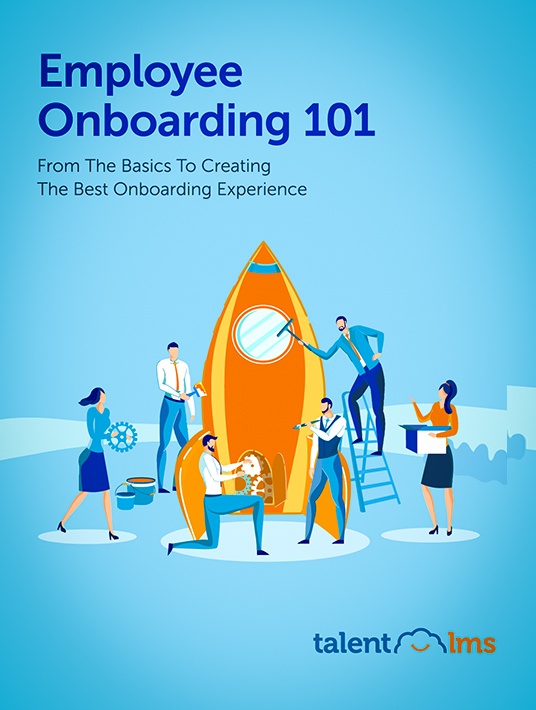Getting Feedback On The Onboarding Experience
You’ve put time and effort into creating a successful onboarding program. You’ve taken care to avoid the common pitfalls, and you feel the onboarding process was actually successful. But other than your hunch, do you have any actual feedback that backs this up? Sticking to a good process is a great start, but how do you actually know that it worked?

Feedback is important to all projects, and that’s also true for the onboarding experience your company has created. But how do you get the feedback? And where do you start?
Who To Get Feedback From
The first step to good feedback is to know who to ask for it. You’ve already assumed, of course, you will ask your new hires. And that is correct. But there are more roles to look into.
New Hires
Your new hires should be the first people to ask. You can get immediate information on how they felt, what they thought went well, what could be improved, and how it could be improved. But your new hires aren’t the only people to ask.
Managers
Managers of newly added team members are also a crucial part of the feedback process. Keep in mind that managers are the ones who know best what their team members’ roles are, so they can provide you with valuable input on whether the onboarding ticked all the right boxes in that department. But what’s more, managers are the people who have everyday interaction with new team members, so they can also provide feedback on the feelings of the new members, as well. Did they look nervous? Frustrated? Exasperated? These are also things you should be aware of, and managers can help.
Mentors And Coworkers
If you have assigned mentors to the new employees, remember to ask them for feedback, too, as they have spent an important amount of time together. Taking it a step further, if time allows and the team the new hire is assigned to is small, you could try talking to the whole team, asking whether there’s anything they feel you should know. Challenges the new hire had with using the training platform, for example. But that is a fine line, so getting feedback discreetly is important. Otherwise, the new member might feel they are being examined instead.
How To Get Feedback On The Onboarding Experience
Knowing how to get feedback is equally important as to who to get it from. There are several ways to receive feedback. According to the company needs, the number of new hires, etc., you can choose the one that currently suits you best or opt for a combination of them.
One-On-One Meetings
The most widely used method is a one-on-one meeting between the person in charge of the onboarding experience and each of the new hires. One-on-one meetings provide the new members with a safe space, making them feel more comfortable expressing both their positive and negative feelings on the experience. Make sure to communicate to the new employee that any information they share is confidential, that honesty is both important and well-received, and that there is no reason to worry about any negative feedback. It is important for them to know they can speak freely, so be mindful of the way you handle a possibly emotional moment that might arise during this process.
Group Meetings
You can also opt for a group meeting, where all the new hires meet with the onboarding manager at the same time. This way, one employee might raise an issue that someone else also experienced, but forgot to raise before. This will be valuable in detecting whether multiple people have the same issues and will help in reminding employees of issues they potentially forgot. On the other hand, while group meetings bring their own value to the table, some employees might find them intimidating. Some people feel reluctant to speak up in meetings, and a large number of people might make them feel anxious. Make sure to think very carefully before using this form of receiving feedback, and take into consideration the characters of your new hires to the extent that is possible.
Anonymous Surveys
The one strong advantage that stands out with using anonymous surveys is that anonymity creates a safe space. Knowing the survey is anonymous, people usually speak up about important issues. And, they do so with more honesty—and often with much more detail. Of course, anonymous surveys only work if you have a sufficient amount of new hires. If you only onboarded 3 members, it won’t be much of a mystery who wrote what, which ultimately turns the effects of anonymous surveys obsolete. What is more, anonymous surveys don’t make room for on-the-spot follow-up questions that you might otherwise ask someone who gives you interesting answers.
Preparing For The Feedback Session
Just knowing who to ask doesn’t cut it. You also need to know what to ask. And this is something that should be prepared beforehand. Before you jump into your feedback session, identify what you need to know. Outline the topics first. For example, do you just want feedback on your onboarding content? Or are you also concerned about the duration? After having outlined the topics, move on to the specifics of each one. If you’re concerned about the content, for example, you can ask questions on its length, its quality, its clarity, or how relevant the information was according to the new hire’s role.
If you want to concentrate on the duration of the onboarding process, ask questions about the length of the process, the timeline, the feelings of the new employee about it, and the problems it created. With your questions ready, you can now jump on your feedback meetings. Of course, having a set of questions in front of you will be helpful. But you can also be as flexible as needed. If a team member has some extra valuable or surprising information, remember to follow up on the spot with extra questions that might pop up as you go. Lastly, keep a record of all premade and extra questions that might arise, as you might find them useful in future feedback sessions, or you might need to re-evaluate them later on. Keep in mind that you should also keep a detailed record of the feedback the new members provided you with.
In Conclusion
Feedback is an important step to maintaining and improving a good onboarding program. Finding who to get feedback from and how you want to do it are crucial steps before you move on to receive it. For more tips, download the eBook Employee Onboarding 101: From The Basics To Creating The Best Onboarding Experience.


